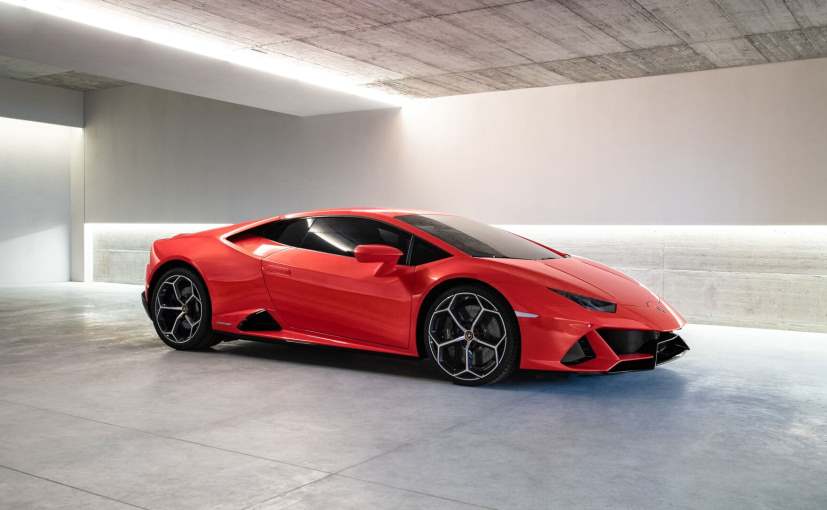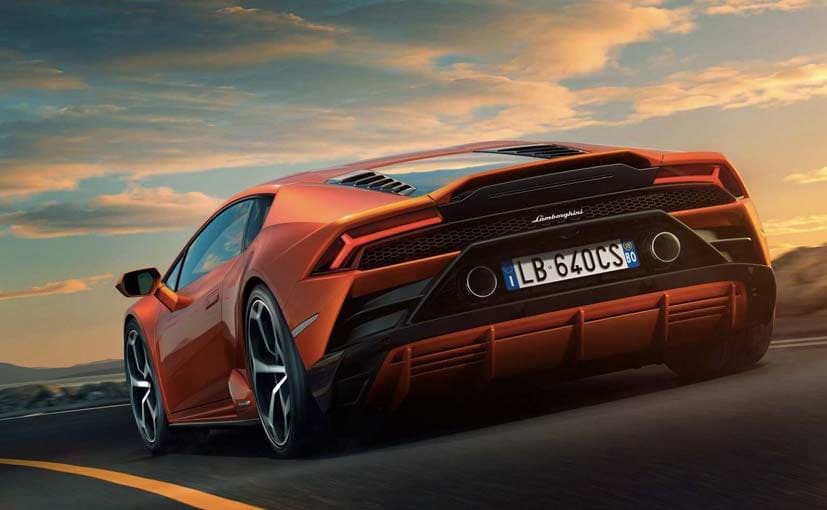The 2020 Lamborghini Huracan Evo made its global debut late year and has finally been launched in India at a price of ₹ 3.73 crore (ex-showroom). This is only the second time the car has been showcased globally, after being showcasing the same in Bahrain earlier this year. The Huracan Evo is the facelifted version of the two-door supercar as it reaches the halfway point of its life cycle. On the surface, the Huracan Evo may not appear to get much changes, but the upgrades are extensive and include new styling, more features, improved aerodynamics and more power on the Ferrari 488 GTB rival. Here’s a look at all the changes the 2020 Lamborghini Huracan Evo gets over the older Huracan.
Also Read: Lamborghini Huracan Evo Launched In India
Lamborghini Huracan
3.53 Crore * On Road Price (New Delhi)

The Lamborghini Huracan Evo is the first model from the company to drop LP from its name
First Lamborghini To Drop LP From Its Name
The 2020 Lamborghini Huracan Evo is the first car from the Italian automaker to not wear the LP name in its title. Ardent fans of the supercar maker will know that Lambo has always added LP to the name of its car, and was in fact, seen on the previous model – Huracan LP610-4. The practice of using the designation has been going for decades, but was done in a bid to increase brand recognition and claim international naming rights, especially in newer markets like China. The LP moniker stands for “Longitudinal Posterior”, with Longitudinal signifying how the engine has been placed in the car (nose to tail), and Posterior indicates its position which is behind the driver. The numbers that follow is the power output on the car, with 2 or 4 denoting whether the car is All-Wheel Drive or Rear Wheel Drive.
The Huracan Evo gets an updated rear with a new diffuser, dual exhaust ports and rear lip spoiler
Improved Aerodynamics
The Lamborghini Huracan Evo gets several upgrades to ascertain its aerodynamic prowess. The front bumper has been revised with larger air intakes that improves aerodynamic efficiency via the front slitter and integrated wing. The aero competency has been further improved with the underbody, which has been shaped to maximise aerodynamic efficiency. Inspired from the Huracan Performante, the new Evo gets the twin exhaust outlets positioned high up in the car’s rear bumper, while the upper end of the tail features an integrated, slotted spoiler providing enhanced air flow. Lamborghini says the revised styling on the Evo has further improved the downforce by seven times and overall aerodynamic efficiency by five times over the previous version of the Huracan. The improved aerodynamics have also helped achieve 16 per cen more engine cooling.
The Lambirghini Huracan Evo gets the new Arancio Xanto paint scheme with 20-inch Aesir alloy wheels
Revised Styling
The styling upgrades on the Lamborghini Huracan Evo are subtle but bring noticeable changes to the two-door coupe. The Evo is showcased in the new Arancio Xanto four-layer paint scheme, while there are new 20-inch Aesir alloy wheels wrapped in Pirelli P Zero tyres. The supercar also comes with new front and rear bumpers, fresh side skirts and new air intakes and an integrated front splitter. The rear diffuser and integrated spoiler better balances the downforce and drag, while the high-mounted exhaust system exist from either side of the number plate. Inside, the Huracan Evo gets new specific Alcantara and leather trim options with the new Arancio Dryope trim matching the new colour option.
The Huracan Evo gets a boost of 29 bhp and 40 Nm of peak torque over the predecessor
Same Engine, More Power
Following on from the Nurburgring record-holding Huracan Performante, the new Lamborghini Huracan Evo now benefits from the same power output. The powertrain remains the saem 5.2-litre naturally-aspirated V10 engine that is now tuned to produce 631 bhp and 600 Nm of peak torque. The motor has received a power boost of 29 bhp and 40 Nm over the predecessor, which means that 0-100 kmph is now achieved in a time of 2.9 seconds, 0.3s lesser than the pre-facelift version. Meanwhile, 0-200 kmph comes up in 9 seconds. The top speed remains unchanged at 323.5 kmph. With a dry weight of 1422 kg, the Huracan Evo reaches a weight-to-power ratio of 2.22 kg/hp.
Lambo’s new LDVI processing unit on the Evo allows the chassis to be tailored to the driver’s preferences
More Electronic Aids
The Huracan Evo retains its four-wheel drive system, but is complemented by a host of chassis upgrades. There’s the new all-wheel steering system and four-wheel torque vectoring, as well as Lamborghini’s new Dinamica Veicolo Integrata (LDVI) central processing unit, allowing the chassis to be tailored to the driver’s preferences. The Lamborghini Piattaforma Inerziale (LPI), which is a comprehensive set of accelerators and gyroscope sensors placed at the car’s centre of gravity, has been updated to version 2.0; and monitors in real-time the dynamic vehicle attitude in lateral, longitudinal and vertical acclerations, as well as roll, pitch and yaw rate.
The magnetorheological suspension has also been upgraded to version 2.0 and adapts the damping following inputs from the LPI. The car also gets enhanced torque vectoring in the all-wheel-drive system that allows traction to be directed through any of the four wheels, while the automaker has also worked on the dynamic steering system to provide higher responsiveness in corners while requiring the lowest steering angles.
The Huracan Evo gets the new 8.4-inch touchscreen infotainment system adding more features to the car
New Features
The new Huracan Evo will be trimmed in a blend of Alcantara and leather. It will also receive a new 8.4-inch infotainment system with Apple CarPlay, sat-nav and internet radio. A more advanced voice command system also makes it to the Huracan Evo, borrowed from the Aventador. New features also include a dual-camera telemetry system with a high-capacity hard disk. Lamborghini has increased the range of personalisation options on the Huracan that include new wheels, colours, upholstery options and style packs. Customers can also opt for lightweight interior materials including forged composits and a patented carbon skin, at an additional cost of course.
Also Read: Lamborghini Huracan Evo: Top 5 Features
The 2020 Lamborghini Huracan Evo is priced at ₹ 3.73 crore (ex-showroom) in India
Price
The Lamborghini Huracan was originally launched in India in 2014 at a price tag of ₹ 3.43 crore. While we’ve seen several special editions make their way to India over the years, the Huracan Evo is the comprehensively updated version of the supercar and is priced at ₹ 3.73 crore (all prices, ex-showroom).
Source: Read Full Article






